
David Biggs
I try to always keep an open mind and my wits about me. Other than that, anything goes! Makes for some unpredictable adventures out there in the real world. I've worked in the publishing industry for 10+ years and have been a member of the FSWA for 5+ years. Go Steelers!
Website URL: http://www.drinkfive.com
As the general manager of a fantasy team, each week you are presented with many decisions to make. The choices you make can then have dire consequences on the fate of your team for the remainder of the season. It’s important to weigh these start/sit questions very heavily against the health and recent performance of the player, the efficiency of the defense they are facing and the ability of the offense in which they play to score points on a week-to-week basis. We’ll help to make some of these decisions easier, but ultimately it’s up to you which way you decide to go! Here are our Week 4 Rankings, and feel free to use the start/sit tool here on the site as well.
Quarterbacks
START Tyrod Taylor (BUF) vs. NYG – We've been telling everyone that we can find every week to pick up Tyrod Taylor as part of our waiver wire picks, and he is finally owned in more than 2/3 of Yahoo leagues. Took long enough! As the 5th highest scoring QB in standard leagues so far this year, it would be borderline insane not to start him now on a weekly basis. The Giants passing defense also happens to be the worst in the NFL so far this year, allowing more than 1000 yards of passing offense over just 3 games. Enjoy!
SIT Philip Rivers (SD) vs. CLE – Rivers has a worse-than-average matchup this week against a good Cleveland secondary, and is sorely missing Antonio Gates. Over the past 3 games he has put up 5 TDs and 4 INTs. Rivers is now - for all intents and purposes - a QB2 with some upside, and we're staying away from him until he can show us otherwise.
Running Backs
START Justin Forsett (BAL) vs. PIT – Forsett has had some trouble getting it going this year (and some of that blame can be put on the overall Ravens' offense and play-calling, as well), but he should have a good game this week against the division rival Steelers' front without Ryan Shazier. Both teams may have some issues generating offense early in the game and will lean on the run to some degree. I'm predicting he has the best game of his year so far against Pittsburgh on Thursday night.
START C.J. Spiller (NO) vs. DAL – Spiller will continue to get more opportunities in the backfield starting with this week's game against Dallas. Finally healthy, he should be able to produce against the Cowboys at a FLEX level at least - especially in PPR leagues. I saw Spiller dropped in a few leagues already - those teams will be regretting that decision after his performance in week 4.
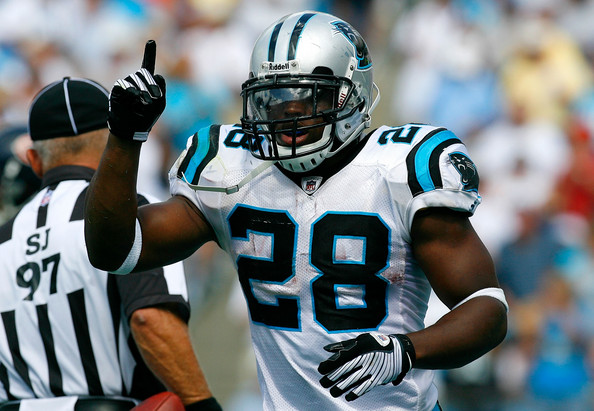
SIT Jonathan Stewart (CAR) vs. TB – Stewart has not been playing well this year and Cam Newton has had to shoulder most of the load, along with Greg Olsen. With Stewart's recent injury (knee) he is not going to be a start even if he does give it a go on Sunday. This is a situation where you need to be extra cautious, because he could go out there and only touch the ball 8 times. I'd rather start a running back with less upside this week, along as they're healthy.
SIT Ronnie Hillman (DEN) vs. MIN – The rumors of C.J. Anderson's demise have been far overblown. True, Hillman has seen the field a lot while Anderson has been nursing an injury, but the Broncos' coaching staff has repeatedly said that they are still looking at C.J. as the main guy in Denver and has been getting the snaps in the situations that count.
Wide Receivers
START Calvin Johnson (DET) vs. SEA – Yes, they're playing the Seahawks. Yes, the Lions have had all sorts of issues with their offensive line and play-calling. Still, it's likely that Detroit will need to chuck the football in order to keep pace in this game and Megatron is the #1 target that they'll be going to. He scores 100 yards and a TD in this game for sure! Quote me on that.
START Marvin Jones (CIN) vs KC – It's been disappointing to be a Marvin Jones owner over the past few years. The guy is extremely talented but never seems to stay healthy when all the planets are aligning for him to excel. This year he gets another shot: the Dalton machine is running better than it ever has before and Jones has locked up the #2 WR role in this offense. Expect consistent high-end production on a week to week basis from here on.
SIT John Brown (ARI) vs STL – The Rams have one of the better passing defenses this year, allowing just over 200 yards per game and only 2 TDs over the past 3 games. Not that Arizona will have too tough a time moving the ball, but I think that they will be passing the ball around a lot and utilizing their newly found running game as well. Brown is still getting a few receptions per game but he has not shown as much of that big play ability that made him such an attractive pick on draft day. Sit him!
Tight Ends
START Maxx Williams (BAL) vs. PIT – C'mon, the guy's name is MAXX! Anyway, the lack of targets in Baltimore has forced Flacco to keep checking down to his tight ends and without Crockett Gillmore (out, calf), Maxx Williams steps up to the plate. We've seen this guy grab a pass and knock through a few defenders like bowling pins and I'm expecting that to happen a few times in this game against a pretty weak passing defense.
SIT Eric Ebron (DET) vs. SEA - Ebron has been performing well this year, much to many fantasy expert's chagrin. I think that is mainly due to the inability of the offensive line to give Stafford time to throw to his receivers but I expect Detroit's scheme and play-calling to get better. Hope you enjoyed your time in the spotlight, Ebron - I think we'll be seeing less production from you in the weeks going forward.
Week 2 was full of successes and missteps, as it always is. It was also a week that included tons of unexpected wins or losses for teams with different expectations (here's looking at you, Eagles). It's important to remember that the first few weeks of every NFL season are filled with turmoil, and should be treated as such. Don't make any rash moves by dropping under-performing players just yet, but absolutely scoop up and stash a few of our weekly waiver picks while they are still available. The trick is to get these guys while the getting is good. Good luck!
Quarterbacks
Tyrod Taylor, BUF – (owned in 15% of leagues) Taylor impressed in week 1 and was included in our initial waiver wire picks. Week 2 only brought more production from the rookie QB as he ended the day with 3 passing TDs and ran one in himself as well. There are downsides still, though, and Taylor did have 3 INTs in week 2. As he gains experience those mistakes should be tempered but the upside is what we're looking for here. Taylor likely won't be available in most leagues after this week.
Andy Dalton, CIN – (owned in 30% of leagues) Dalton is the line by which we generally measure all of the other QBs in the NFL. The 'Andy Dalton Line' determines whether a QB is above or below average. This year may change that, though, as Dalton has thrown 5 TD passes and no INTs over 2 games and the Bengals' passing offense looks to be running on all cylinders in 2015. Barring injuries to guys like Green, Kelce, Jones and Bernard, Dalton could make a case to be started on a week-to-week basis going forward.
Other players to consider are Blake Bortles (owned in 9%) who has developed great chemistry with Allen Robinson and Julius Thomas's impending return to the field will also add value. Derek Carr (owned in 14%) will likely be throwing passes from behind for most of the season and that generally bodes well for some garbage time touchdowns. Amari Cooper is also coming into his own on the Raiders.
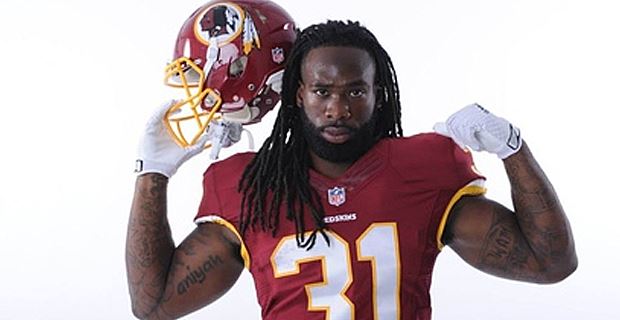
Running Backs
Matt Jones, WAS – (owned in 23% of leagues) Jones was drafted to be the passing down complement to Alfred Morris's early down role, but his current trajectory has him on course to eclipse Morris's touches eventually. In week 2, Jones was just a few touches shy of Morris and he continues to impress not only in 3rd down situations but also in early down use, spelling Morris. A pickup on the waiver wire now may be the only time that Jones is available for the rest of the season.
David Johnson, ARI – (owned in 34% of leagues) Johnson was billed as the bigger, faster version of Andre Ellington and he has certainly proved to be a valuable commodity on the Cardinals so far this season. Johnson has the highest points per touch in the NFL so far this year and the only issue is how much production Bruce Arians will allow him to have on a weekly basis. If there is any time to play him, though, it's now - when Johnson needs to prove his worth while Ellington is out.
Other players to consider are James Starks (owned in 11%) because Eddie Lacy exited the game in week 2 with an ankle injury and is not a lock to play in week 3. If Lacy should be inactive this week, Starks is immediately a RB2. Ronnie Hillman (owned in 36%) could take over the lead back role in Denver if C.J. Anderson continues to struggle after his week 1 injury. He's worth a pickup because whoever ends up with that job will get enough work to be an every week starter.

Wide Receivers
Travis Benjamin, CLE – (owned in 14% of leagues) Benjamin has scored 3 TDs on only 6 receptions over the past two weeks. His stats are gaudy and he is worthy of a pickup in every league, but you must be wary with this sort of situation: not only does Benjamin seem like a boom or bust player, but the Cleveland offense is very much not locked in to any kind of rhythm. Still, even if you're not starting Benjamin you need to put in a claim for him if you are needy at wide receiver.
Michael Crabtree, OAK – (owned in 23% of leagues) As I mentioned earlier, Derek Carr is definitely an up and coming QB in the league and his main weapons (Amari Cooper and Michael Crabtree) will enjoy a high amount of targets in most games this season. Crabtree is a talented receiver with a good pedigree who only really broke out in 2012 while playing for the 49ers. He has the opportunity in 2015 to become fantasy relevant once more, now that he is playing across from the newly drafted Amari Cooper, who should draw the coverage away.
Marvin Jones, CIN – Jones had more snaps than Mohamed Sanu this past week, and things look good for Jones to finally make an impact. Remember, Jones was playing out of his mind in 2013 and scored 10 TDs before being lost for the entire 2014 season due to the same kind of injury that Dez Bryant suffered in week 1. With all of the weapons that Dalton has, Jones should have the opportunity to get free downfield on a regular basis and turn that into fantasy points.
Other players to keep an eye on are Dorial Green-Beckham (owned in 19%) who has monster size, speed and potential, and Rishard Matthews (owned in 2%) who is becoming a favorite of Ryan Tannehill's when he can't find Landry downfield.
Tight Ends
Crockett Gillmore, BAL – (owned in 4% of leagues) Gillmore is a big target that didn't get much of an opportunity to produce last year, but is being leaned on big time in 2015 with Breshad Perriman sidelined until next month. Here is a guy that could solve your TE woes, at least until the Ravens get Perriman back from injury. I'm betting that Gillmore will still have a fantasy impact as a high end TE2 even afterwards, though.
Other players to look for are Richard Rodgers (owned in 8%). The appeal of "Rodgers to Rodgers" is just too seductive. But seriously, Rodgers impressed me with his physicality in his week 2 start against Seattle.
Kickers
Josh Brown, NYG – (owned in 25% of leagues) Brown performed well last week, and the Giants will be facing the Redskins in week 3 who have a fairly formidable rushing and passing defense so far in 2015. This translates to more field goal opportunities for a Giants team that can move the football downfield but may have trouble getting it into the end zone this week.
Josh Lambo, SD – (owned in 3% of leagues)
Defense/Special Teams
Cincinnati Bengals – (owned in 13% of leagues) The Bengals are among the top 10 defensive units in fantasy right now but are only owned by 13% of teams. This week, they play the Baltimore Ravens, who have provided a ton of fantasy points to defenses so far in 2015.
As the general manager of a fantasy team, each week you are presented with many decisions to make. The choices you make can then have dire consequences on the fate of your team for the remainder of the season. It’s important to weigh these start/sit questions very heavily against the health and recent performance of the player, the efficiency of the defense they are facing and the ability of the offense in which they play to score points on a week-to-week basis. We’ll help to make some of these decisions easier, but ultimately it’s up to you which way you decide to go! Here are our Week 2 Rankings, and feel free to use the start/sit tool here on the site as well.
Quarterbacks
START Peyton Manning (DEN) vs. KC – Could Peyton Manning have peaked in 2013 and he is now on the decline? Sure. But you drafted Manning to be your #1 QB and it’s silly to give up on a guy after one bad performance. Just ask those people who dropped Tom Brady after a few bad performances last year and he went on to make them regret that decision in short order.
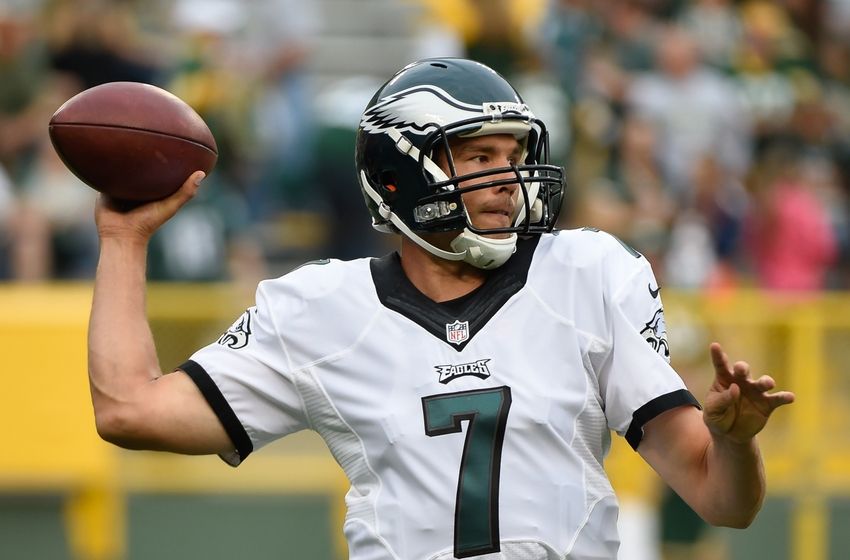
SIT Sam Bradford (PHI) vs. DAL – Bradford had a good completion rate (69.2%) in week 1 against the Falcons, but he did throw 2 interceptions and only 1 TD against a team that was dead last in passing defense last year. Bradford still does not look completely comfortable in his new offense, and the Eagles will likely try to get DeMarco Murray going against his former team. I’m not saying that Bradford is off the radar, just that you may have a better option at QB this week.
Running Backs
START Darren Sproles (PHI) vs. DAL – Sproles was second in targets on the Eagles only to Jordan Matthews last week and finished the game with 126 all-purpose yards. Until Bradford has complete command over the passing offense this season, we’ll likely see Sproles’ usage stay at a high level. I’m suggesting that Sproles be considered a flex play even in standard leagues this week as the Eagles try to find a sure-footed way to beat the Cowboys.
START Giovani Bernard (CIN) vs. SD – San Diego’s passing defense is weak at best, and Andy Dalton and the Bengals will use short passes around the line of scrimmage (in conjunction with A.J. Green stretching the field, of course) to Tyler Eifert and Giovani Bernard to maximize their YAC (yards after catch) abilities. In a game where the Bengals may be playing catch-up, look for Bernard to be used as much or more than he was in week 1.
SIT Bishop Sankey (TEN) vs. CLE – Bishop Sankey and Terrance West are involved in a rotation based on the game situation, and starting Sankey due to a touchdown heavy performance in week 1 (2 TDs on 86 all-purpose yards) is not a smart move. Plus, Tennessee is more than likely to falter here, with a young offense led by a young quarterback – expect missteps in week 2.
SIT Latavius Murray (OAK) vs. BAL – Murray looks like the guy who will shoulder the majority of the running game in Oakland as long as he can remain healthy. The problem is that he is on the Oakland Raiders. Look, the Raiders may be headed in a good direction but when they go up against good NFL teams like the Baltimore Ravens we cannot expect the game to go in their direction. The truth of the matter is that Murray’s great games will come against much lesser teams until the rest of the Raiders’ offense can step up.
Wide Receivers
START Jeremy Maclin (KC) vs. DEN – This was a tough one for me to declare since I’m not a huge believer in Alex Smith’s ability to air out the ball, but Thursday Night Football against the Denver Broncos in Week 2 of the 2015 NFL season is when the Great WR Touchdown Famine will come to an end for the Chiefs. Alex Smith will throw a touchdown pass to Jeremy Maclin and there will be much rejoicing. Editor's Note: After putting up less-than-great stats on Thursday, Maclin has officially landed on the 'Prove It' list going forward.
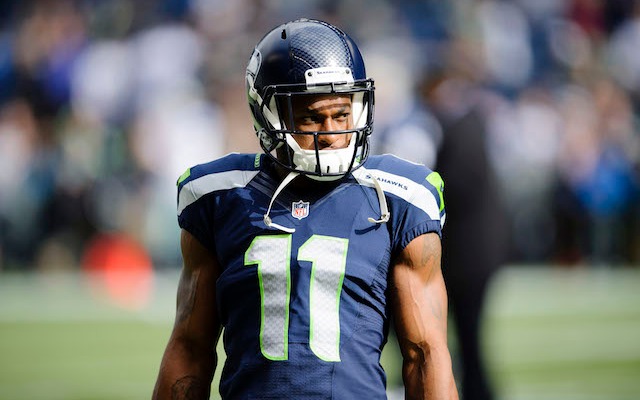
START Percy Harvin (BUF) vs NE – Probably the riskiest start on the board this week, Harvin looked like he had something to prove (and he did) in Week 1 against the Colts, putting up 5 receptions for 79 yards and a TD. He also had a 9 yard rush. Buffalo is going to pull out all of the stops against the division rival Patriots and with Watkins sucking up coverage, Harvin should be moved all around the field to make plays. Underestimating Buffalo’s offense this year is a mistake.
SIT Davante Adams (GB) vs SEA – It was Davante Adams year to break out they said, with Nelson gone, Adams should really take a step up this year they said.. yeah, well the fact is it will take Adams and Rodgers more than a few games this year to establish real chemistry and a lot of that jazz is going to Randall Cobb and James Jones instead. Every starting receiver on the Packers has good fantasy value, but this week’s match-up against Seattle combined with James Jones triumphant return don’t bode well for Adams in week 2.
SIT Larry Fitzgerald (ARI) vs. CHI – Fitz is nearing the end of his career and he has a few big games left in him this season, but Arians doesn’t need to overextend Fitzgerald against the hapless Chicago Bears. In an offense where the ball is normally spread around anyway, Fitzgerald will likely be used mostly as a decoy, drawing defenders away from the real game plan this week. I would expect 6-8 points at most in standard leagues.
Tight Ends
START Heath Miller (PIT) vs. SF – Miller caught 8 passes for 84 yards last week against the Patriots and is always a red zone threat for Ben Roethlisberger, due to his 6’5” frame. Although his production has waned over the past few years, suspensions to Martavis Bryant and Le’Veon Bell have forced him back into use as a regular passing target. One of Ben’s most trusted targets of all time, Miller should be treated as a top 10 TE this week and will likely see higher than normal usage until Bryant returns.
SIT Jordan Reed (WAS) vs. STL - We know that Reed performed well in Week 1 against Miami (7 receptions for 63 yards and 1 TD), but the Rams should prove to be an even tougher opponent defensively and it doesn't help that Desean Jackson will be sidelined for at least this game, closing in the defense on Kirk Cousins and the short game. Reed may be a fill-in play in a PPR league at best, because I don't see any substantial amount of yards or any touchdowns, for that matter, coming from him in week 2. To top it all off, Reed had a quad issue all week and we hate to see injury prone players on the injury report.
On the podcast this week, we touched on some major and minor injuries throughout the league which I've included below. We also branched out the discussion to news, waiver wire picks, overachievers and much more. Give the show a listen to really dig into the meat and potatoes this week!
(Listen to the Fantasy Football Podcast, 9/15/15: Week 2 Preview)
Quarterbacks
Derek Carr (OAK): What looked like a bruised hand may have been something more, but we weren’t certain. An MRI on Monday didn’t reveal any lasting damage – just a bruised thumb on Carr’s right throwing hand. They were exploring the signing of Christian Ponder, among other veteran QBs.. thankfully we should see Carr back in the saddle in week 2, or week 3 at the latest (in which case backup Matt McGloin would fill in against the Ravens). Editor's Note: Looks like Carr will in fact start in week 2 barring setbacks.
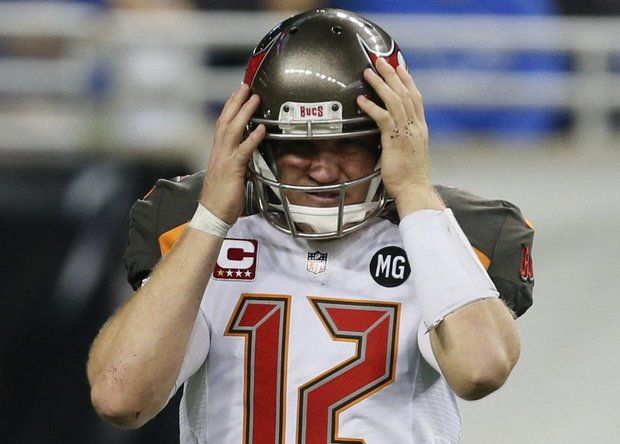
Josh McCown (CLE): A concussion sustained on a dive into the end zone has sidelined McCown for the time being, leaving Manziel the heir apparent. It remains to be seen whether or not McCown will be able to suit up for week 2’s game but believe me, the Browns would really like for that to be the case after Manziel’s performance on Sunday.
Running Backs
Andre Ellington (ARI): Grade 1 PCL sprain. Not as bad as it could have been, Ellington will likely miss all of September and most of October recovering from this injury. It does afford new Cardinals running backs Chris Johnson and David Johnson an opportunity to show their worth to the team. Expect David Johnson to continue to impress but have his carries limited, as Arians would prefer not to let a rookie shoulder the load. We already know what Chris Johnson can do..
C.J. Anderson (DEN): Anderson’s injury is being shrouded in a little bit of mystery here and that is rather concerning for fantasy owners. He was expected to produce top-10 numbers this season and so any bad news here will likely result in some butt-hurt team managers. Whispers of this injury being more than just something day-to-day have catapulted Ronnie Hillman’s stock on the waiver wire and I would be surprised if he doesn’t end up being a top pickup this week.
Wide Receivers
Dez Bryant (DAL): Suffering from a “Jones” fracture (the same injury that kept Marvin Jones and the NBA’s Kevin Durant out for a season), Bryant was a huge part of the Cowboys offense and now they may have to face being without him for at least 6-8 weeks, if not the rest of 2015. What should you do as a Bryant owner? Well, after a little light weeping, try to scoop up one of the top receivers available on the wire this week. From the Cowboys’ perspective, Terrance Williams, Gavin Escobar and Cole Beasley all benefit – this injury will also likely bring Jason Witten back up to TE1 status for the remainder of the Bryant’s recovery.

T.Y.Hilton (IND): It looks like a particularly badly bruised knee – that kind of injury could sideline a player for a few days or a few weeks depending on how it heals. Should Hilton not play in week 2, reports say that Donte Moncrief will be the guy who fills his shoes and is immediately start-able on your roster as a WR2/3.
DeSean Jackson (WAS): Alas poor Washington, it was not to be. Pierre Garcon and Jordan Reed will try to lap up Jackson’s missed production so consider starting either while Jackson recovers from the this hamstring issue (he should be back sometime in October). Andre Roberts is an intriguing option here as well, but we’re shying away from the Redskins offense in general.
Tight Ends
Delanie Walker (TEN): Walker has a splint on his right hand – certainly not a good sign for a pass-catching TE that excels in PPR leagues. Looks like he has successfully avoided a major injury, though, so he may end up being on the field in week 2. If not, Anthony Fasano will fill in but he should be avoided even as a spot starter – there are better options available. Kendall Wright gets the biggest boost from this injury, should Walker be forced to sit out the game.
Recent Articles
-
NFL Confidence Pool Picks & Strategy 2024 - Week 18
 To say this has been a year of uncertainty is an understatement. So many injuries, coaching changes, player issues shaped…in Fantasy Football / NFL
To say this has been a year of uncertainty is an understatement. So many injuries, coaching changes, player issues shaped…in Fantasy Football / NFL -
NFL Confidence Pool Picks & Strategy 2024 - Week 17
 Christmas is indeed the time of giving. And this year, the NFL is giving us a double-header on Christmas Day…in Fantasy Football / NFL
Christmas is indeed the time of giving. And this year, the NFL is giving us a double-header on Christmas Day…in Fantasy Football / NFL -
NFL Confidence Pool Picks & Strategy 2024 - Week 16
 Normally, being just a few weeks away from the end of the season, playoff positions are solidified and we need…in Fantasy Football / NFL
Normally, being just a few weeks away from the end of the season, playoff positions are solidified and we need…in Fantasy Football / NFL -
NFL Confidence Pool Picks & Strategy 2024 - Week 15
 Finally! They’re done! We are heading into week 15 and FINALLY we are done with bye weeks! 16 games a…in Fantasy Football / NFL
Finally! They’re done! We are heading into week 15 and FINALLY we are done with bye weeks! 16 games a…in Fantasy Football / NFL
 Please wait...
Please wait...- Home
- drinkfive Podcasts
- David Biggs



